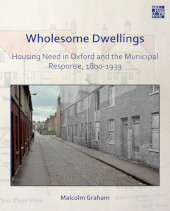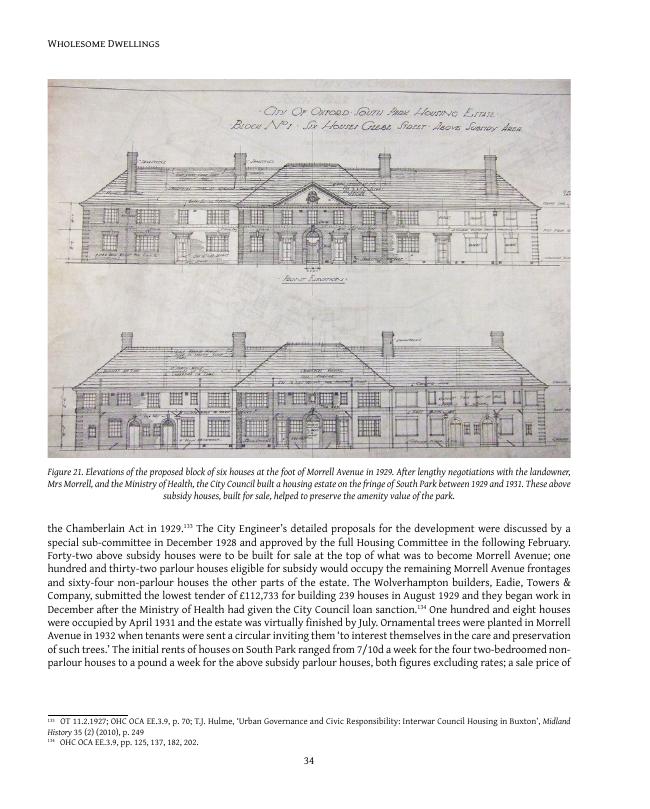Wholesome Dwellings : Housing Need in Oxford and the Municipal Response, 1800-1939
124 p.
A shortage of affordable new housing, builders choosing to build larger, more profitable houses, and a diminishing stock of cheap houses for rent. All this sounds very familiar today, but at the end of the Great War, scarcely any houses had been built for four years and there was political pressure to build 'Homes for Heroes', impelled to a degree by fear of revolution. Council housing, supported by central government funding, was the chosen solution in 1919, and this study by Malcolm Graham, a leading Oxford local historian for many years, examines the consequences in Oxford, then a university city on the cusp of change. Behind the city's Dreaming Spires image, housing for the working population was already in short supply, but an economy-minded and largely non-political City Council had always been reluctant to intervene in the housing market. In 1919, there was no hint of the city's industrial future, and the City Council saw the replacement of substandard houses as its main challenge. The meteoric rise of
the local motor industry in the early 1920s led to rapid population growth and created a massive new demand for cheap housing. Dr Graham examines the uneasy partnership between the City Council and Whitehall which led to the building of over 3,000 council houses in Oxford between the Wars. The provision of these 'wholesome dwellings' was a substantial, and lasting, achievement, but private builders were in fact catering for most housing need in and around the city by the 1930s. The notorious Cutteslowe Walls, built to exclude council tenants from an adjoining private estate, reflected the way in which the growing city was being socially segregated. Dr Graham provides a fascinating insight into how modern Oxford evolved away from the university buildings and college quadrangles for which the city is internationally renowned. [Publisher's text].
40 figures, 2 tables (colour throughout).
-
Information
ISBN: 9781789697360
DISCIPLINES



